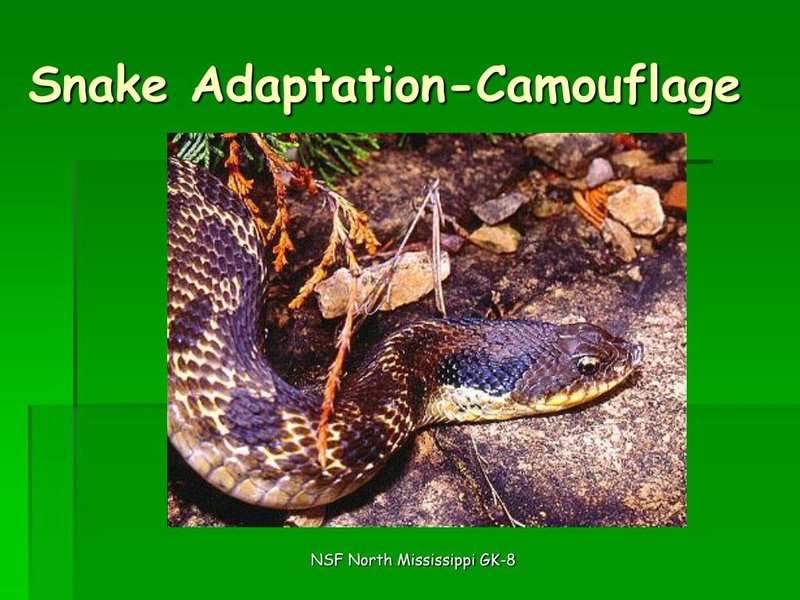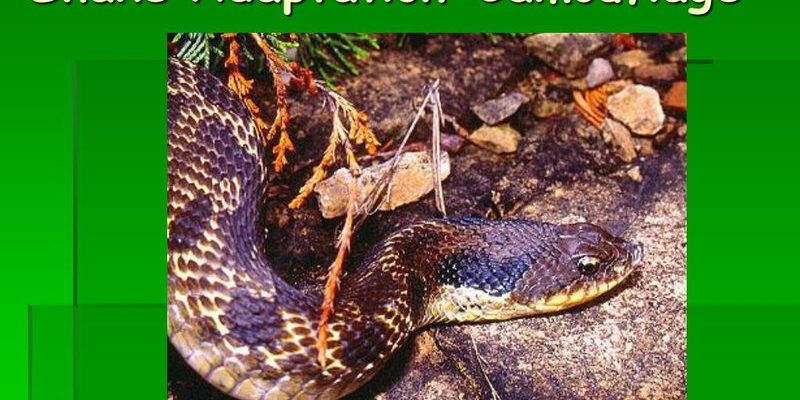
The secret to their success lies in their unique adaptations. From their hunting techniques to their specialized scales, each trait plays a vital role in helping them stay alive and well. If you’ve ever been curious about what makes snakes such fascinating survivors, let’s dive deeper into their world and explore the incredible adaptations that help them thrive.
Flexible Bodies for Better Mobility
One of the most striking features of snakes is their flexible bodies. Unlike other animals, snakes lack limbs, which might seem like a disadvantage. However, this body shape is an adaptation that allows them to maneuver through tight spaces, climb trees, and traverse a variety of terrains with ease. Imagine trying to squeeze through a crowded room—it’s a lot easier without bulky arms or legs getting in the way!
The snake’s spine is made up of many vertebrae, often exceeding 200 in some species. This long, segmented body structure allows for a range of movement. Snakes can contort and coil, making it easy for them to catch prey or escape predators. When hunting, they can strike quickly, using their speed to their advantage. You might be wondering how they manage to balance this flexibility with strength. Well, their muscles are designed to work in tandem with their bones, allowing them to exert a significant force when needed.
Another cool aspect of their flexibility is how it helps them in various habitats. In a narrow burrow or high up in a tree, a snake can navigate effortlessly. This adaptability not only aids in hunting but also helps them evade larger predators looking to turn the tables on them.
Camouflage: Nature’s Best Disguise
Camouflage is one of the most impressive adaptations snakes use for survival. It’s like having a built-in invisibility cloak! Depending on their habitat, snakes have developed skin patterns and colors that help them blend into their surroundings. This is crucial for both hunting and avoiding becoming someone else’s meal.
For example, take the Eastern Diamondback Rattlesnake. With its diamond-shaped patterns and earthy tones, it can easily disappear in a leaf-covered forest floor. When a small animal wanders by, it’s often none the wiser, allowing the snake to strike swiftly. Snakes like the Green Tree Python, on the other hand, have a vibrant green color that helps them hide among the leaves.
Honestly, it’s fascinating to think about how these animals have evolved to become masters of disguise. Some snakes can even change their colors slightly depending on the environment. Think of them as nature’s own “transformers,” adapting to survive in the wild.
Venom: A Double-Edged Sword
Venom is perhaps one of the most notorious adaptations snakes have developed, but it’s also one of the most misunderstood. While some people fear it, the truth is that venom serves a critical purpose. It’s not just for scaring us; it plays a key role in hunting and defense.
Many snakes possess venom that can immobilize or even digest their prey. For example, the King Cobra has a potent venom that can kill a large animal in minutes. This is incredibly effective for catching food, especially when dealing with slippery or quick prey. But how does it work? The venom contains enzymes that break down the prey’s tissues, allowing the snake to absorb nutrients more easily.
However, here’s the thing: venom isn’t just for offensive measures. It also serves as a defense mechanism against predators. A snake that bites in self-defense is usually trying to send a clear message: back off! Some snakes, like the Gila Monster, use venom primarily for defense, delivering a painful bite to potential threats without necessarily relying on it for hunting.
Heat-Sensing Pits: The Ultimate Predator Tool
Imagine being able to see your food without using your eyes. That’s essentially what snakes with heat-sensing pits can do. Pit vipers, like the Rattlesnake and Copperhead, have specialized organs that detect infrared radiation, which is emitted by warm-blooded animals.
These heat-sensing pits are located between the nostrils and eyes, allowing snakes to pinpoint the location of their prey even in complete darkness. When they hunt at night, this adaptation becomes a game-changer. Picture a heat-seeking missile—these snakes can accurately strike at their target without needing to rely on sight or sound.
This adaptation is vital for survival, especially in environments where food might be scarce. It also helps them avoid danger. By being able to detect body heat, snakes can better sense when predators are nearby, allowing them to escape effectively.
Unique Feeding Techniques: Swallowing Prey Whole
Unlike many animals that chew their food, snakes have a fascinating feeding technique that allows them to consume prey whole. This ability is made possible by their extremely flexible jaws. The lower jaw consists of two separate halves that can stretch apart significantly. You might be asking yourself, how does that even work?
When a snake captures its prey, it will use its teeth (which are often curved) to grab hold and then slowly work its mouth over the entire body. The muscles in its throat and body help to push the prey down into its stomach. This method is especially useful for swallowing larger animals, which is something many other predators can’t do.
It’s a bit like putting an entire spaghetti noodle into your mouth—though much weirder to witness in nature! This adaptation allows snakes to take advantage of smaller animals without having to compete with larger predators, giving them an edge in the food chain.
Reproduction Strategies: Coping with Challenges
Snakes have developed unique reproductive strategies that help ensure the survival of their species. Some lay eggs, while others give birth to live young. This variation can be seen in different habitats and climates, as some environments are more conducive to egg-laying than others.
For instance, the Eastern Garter Snake lays eggs in warm, moist places where the hatchlings can thrive. These eggs develop in a safe, controlled environment, protected from many potential threats. On the flip side, species like the Boa Constrictor give birth to live young, which can be advantageous in colder climates where eggs might not survive.
This adaptability in reproductive strategies allows snakes to effectively cope with varying environmental challenges. It’s like having a backup plan in place, ensuring that no matter the situation, they have a way to keep their lineage going.
In summary, snakes are truly remarkable creatures, equipped with an array of adaptations that make them some of the toughest survivors in the animal kingdom. From their flexible bodies and effective camouflage to their clever hunting techniques and reproductive strategies, each feature plays a role in their survival.
If you ever see a snake in the wild, take a moment to appreciate all the ways it’s adapted to thrive in its environment. These little ninjas of the natural world remind us just how incredible evolution can be. So, the next time you think about snakes, remember—there’s so much more to them than just their reputation!

